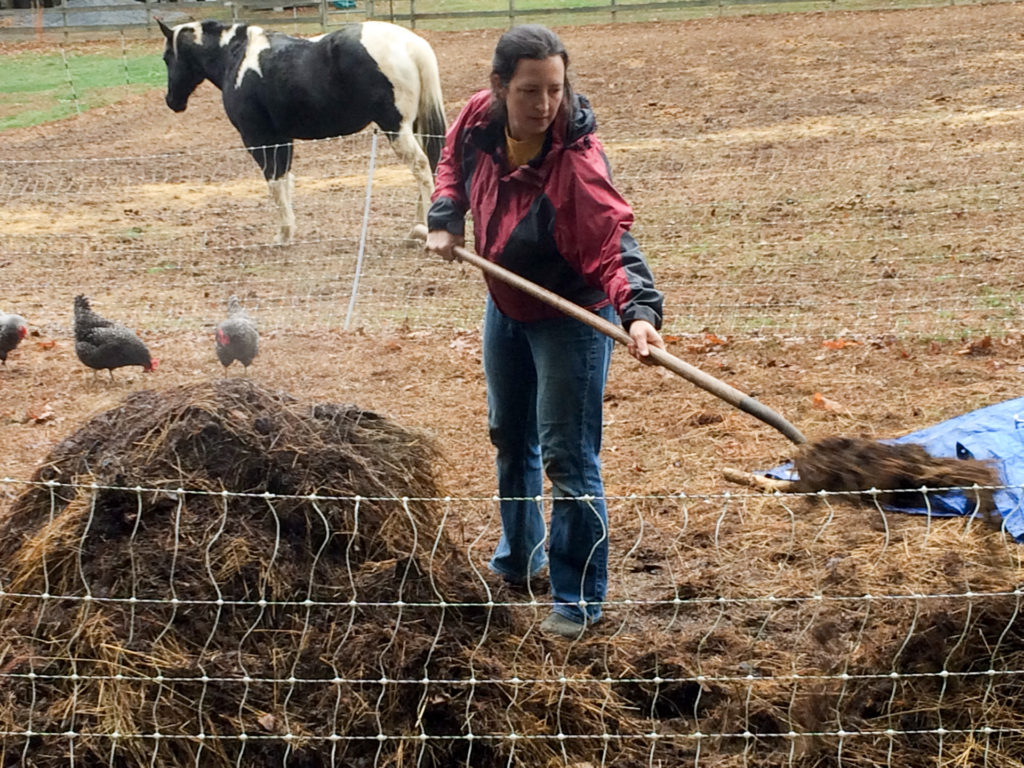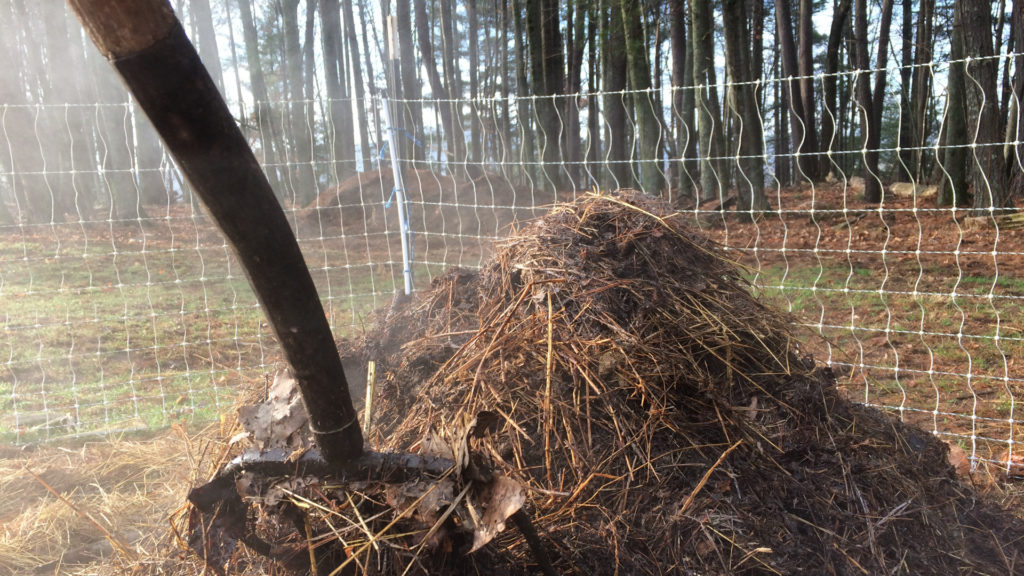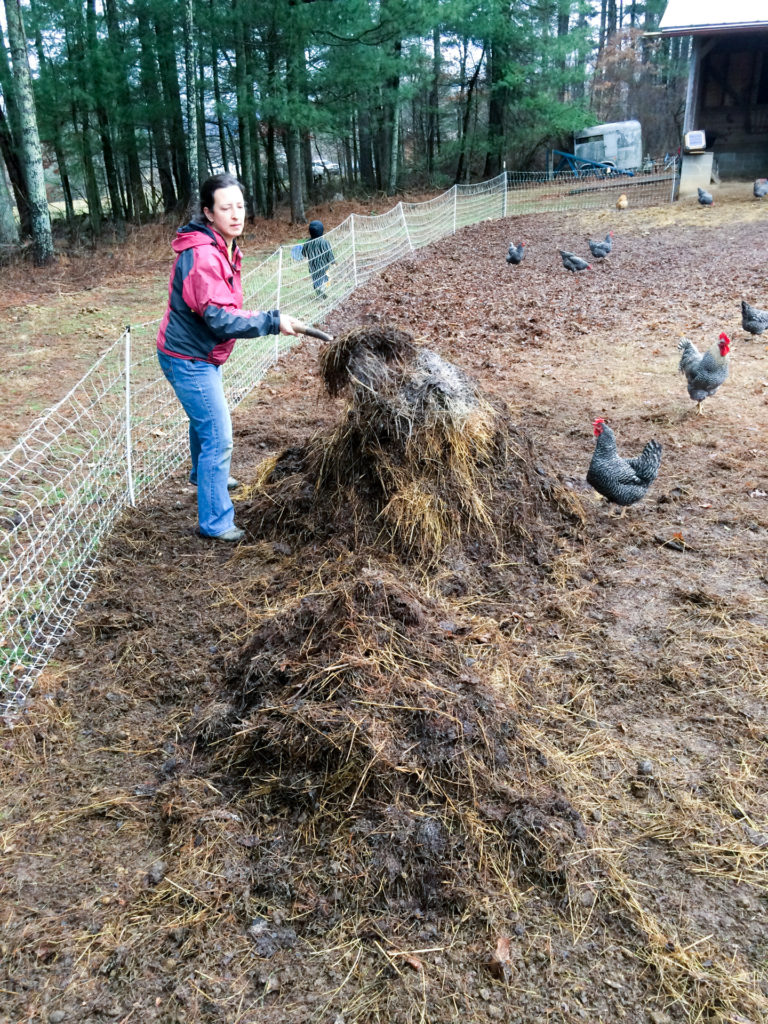Faster Compost with the Berkeley Method
Often when gardeners make compost, we pile up materials in fall, hope for the best, and come back 6 months later. If it’s not done yet, we water, turn, and wait more. It works. But what if you want faster compost? With the Berkeley method of fast, hot composting, you can have finished compost in about 18 days!
Is it weird to see a pile of manure and grass clippings as a windfall?
I’m like 😍 [heart-eyes].
When our neighbor (a.k.a. Grandpa!) started mowing this spring, he kept the bagger on the mower and collected clippings for me. Then, he cleaned up the pasture where their horses ate hay this winter. His mower was able to pick up and shred the mix of old hay and manure.
All this ready-to-rot goodness is piled up near the garden, and I’ve got shredded leaves saved from fall. I am ready to build a rockin’ compost pile using the Berkeley method!
The 18-Day Compost Challenge is the newest bonus for our course Foundations of a Happy Garden.
I’d love to have you in class, and either way, you can get started with this method for faster compost by reading the excerpt below from The Happy Garden Guide to Composting (which also happens to be a bonus for students in Foundations).
The photos below are from an early experiment with the method, and I’ll update them when I have photos from this round! 🙂

Our materials were on the course side here. This was one of the first times we experimented with the Berkeley method for faster compost.
Professor Robert D. Raabe from the University of California Berkeley developed a precise compost procedure that uses all four of the compost accelerators—shredding materials, building a big pile, balancing greens and browns, and turning&mdahs;to create compost in weeks, rather than months.
In the cooperative extension leaflet about his method, Raabe says:
“Extra effort on the part of the composter is required in exchange for this time saving, but for those who want large amounts of compost, or for those who wish to convert materials which are usually wasted into useable compost, the effort is worthwhile.”
Want to give it a try? Here are the keys to the Berkeley Method:
- Start with material that has been chopped and shredded into small pieces, ½ to 1½ inches in size. If possible, woody material should be on the smaller end of that range.
- Choose a proportion of green and brown materials that give you a 30:1 carbon-to-nitrogen ratio. (Review Step 6 in the book for the ratios of common materials.) You can use almost any compostable materials if you take time to figure out the right mix.
- Have water available and make sure materials are wet as you assemble the pile. Ideally, you want the moisture level to be at 50%. In practice, this feels like the wrung-out sponge I’ve mentioned. You should be able to squeeze a handful tightly and get a few drops of water. When you open your hand, the material should stick together, especially as it becomes more uniform toward the end of the process.
- Your pile may be a little too wet or dry in spots at first. The moisture level will even out within a few days. If it is still too wet, you can spread materials to dry. If it is a little too dry, you can add water as you turn it.
- Build a large pile, at least 3’ x 3’ x 3’ or as large as 5’ x 5’ x 5’. Raabe recommends a bin for better heat retention and a neater look. We prefer a tarp-covered pile or windrow shape for ease of turning.
- You need a footprint twice the size of your pile (or a second bin) for turning the pile.

Steam rising off an active “fast compost” pile
The Timeline for Faster Compost
Day 1: Assemble your pile, keeping in mind the guidelines above. Layer the materials to distribute browns and greens throughout the pile. Mix them lightly to prevent matting. Cover with a tarp or canvas to conserve heat and moisture.
Day 2-3: Wait. The microbes get to work. First, the low-temp psychrophilic bacteria dominate, then as the pile heats, the mid-range mesophilic bacteria take over.
Within 48 hours, your pile should reach the high temperatures at which thermophilic bacteria thrive (113° to 160°F). Most pathogens and weed seeds cannot survive this kind of heat.
If your pile doesn’t heat up, it is too dry (water it), too wet (spread it out for a day or add more dry browns), or lacks nitrogen (add nitrogen-rich material when you turn on Day 4).
Day 4 or 5: Turn the pile when the temperature gets close to 160°F. At this temperature, beneficial bacteria die, the pile cools off, and the process must start over.
This is also the point at which the booming population of beneficial bacteria uses up oxygen faster than the gas can diffuse into the pile.
Turning keeps the pile from overheating and adds oxygen the pile. At the same time, it mixes the material and gives heat-generating microbes fresh fuel.
When turning, peel the material from the top and exterior of the old pile and make it the new center. The material from the previous center will become the new outside edges and top. You’re basically turning the pile inside-out to ensure all the material spends time in the hot center.

Turning the pile. The material in this batch wasn’t shredded before I started, so the break down took about 30 days. (I also covered it to keep chickens from spreading active pile out. They did seem to enjoy spreading it after it was done!)
Day 6-17: Turn the pile “inside-out” again every other day. Add water if needed.
If you smell ammonia, your pile has too much nitrogen. Sprinkle in carbon-rich sawdust to balance it out. (Otherwise, avoid adding new materials during the process so you have a finished product that’s consistently decomposed.)
Day 18 or 19: Harvest finished compost. (Read more on harvesting in Step 8 of The Happy Garden Guide to Composting.)
Important Notes about the Method
The Berkeley Method illustrates how creating ideal conditions for thermophilic bacteria will give you compost fast. However, the intensive tending won’t be the best fit for every pile or every composter. For example, the frequent turning breaks up fungal strands and results in bacterially-dominant compost, which is fine for veggies but less useful for fruit trees.
Raabe suggests you can get compost even faster—in 14 days!—if you turn the pile daily. But what if you decide to rest and extra day or two between turns? No problem! Your compost will still work. It will just take a bit longer to break down.
Whether you’re ready to put in the extra effort or not, this example can help all of us understand how to get faster compost and improve our own backyard compost.
An 18-day Composting Challenge based on this faster compost method is the newest bonus in Foundations of a Happy Garden, our premium course on composting and healthy soils. Click here to read more about it.
Now, I’d love to hear from you…
Have you tried making a hot, fast compost pile before? If so, any additional tips? If not, what materials could you gather in bulk to give it a try this year? Tell me in the comments below!
